1.Identification
1.1 GHS Product identifier
| Product name | 1,2-dichlorobenzene |
|---|
1.2 Other means of identification
| Product number | - |
|---|---|
| Other names | Chloroden |
1.3 Recommended use of the chemical and restrictions on use
| Identified uses | For industry use only. Volatile organic compounds |
|---|---|
| Uses advised against | no data available |
1.4 Supplier's details
| Company | MOLBASE (Shanghai) Biotechnology Co., Ltd. |
|---|---|
| Address | Floor 4 & 5, Building 12, No. 1001 North Qinzhou Road, Xuhui District, Shanghai, China |
| Telephone | +86(21)64956998 |
| Fax | +86(21)54365166 |
1.5 Emergency phone number
| Emergency phone number | +86-400-6021-666 |
|---|---|
| Service hours | Monday to Friday, 9am-5pm (Standard time zone: UTC/GMT +8 hours). |
2.Hazard identification
2.1 Classification of the substance or mixture
Acute toxicity - Oral, Category 4
Skin irritation, Category 2
Eye irritation, Category 2
Specific target organ toxicity – single exposure, Category 3
Hazardous to the aquatic environment, short-term (Acute) - Category Acute 1
Hazardous to the aquatic environment, long-term (Chronic) - Category Chronic 1
2.2 GHS label elements, including precautionary statements
| Pictogram(s) |   |
|---|---|
| Signal word | Warning |
| Hazard statement(s) | H302 Harmful if swallowed H315 Causes skin irritation H319 Causes serious eye irritation H335 May cause respiratory irritation H410 Very toxic to aquatic life with long lasting effects |
| Precautionary statement(s) | |
| Prevention | P264 Wash ... thoroughly after handling. P270 Do not eat, drink or smoke when using this product. P280 Wear protective gloves/protective clothing/eye protection/face protection. P261 Avoid breathing dust/fume/gas/mist/vapours/spray. P271 Use only outdoors or in a well-ventilated area. P273 Avoid release to the environment. |
| Response | P301+P312 IF SWALLOWED: Call a POISON CENTER/doctor/…if you feel unwell. P330 Rinse mouth. P302+P352 IF ON SKIN: Wash with plenty of water/... P321 Specific treatment (see ... on this label). P332+P313 If skin irritation occurs: Get medical advice/attention. P362+P364 Take off contaminated clothing and wash it before reuse. P305+P351+P338 IF IN EYES: Rinse cautiously with water for several minutes. Remove contact lenses, if present and easy to do. Continue rinsing. P337+P313 If eye irritation persists: Get medical advice/attention. P304+P340 IF INHALED: Remove person to fresh air and keep comfortable for breathing. P312 Call a POISON CENTER/doctor/…if you feel unwell. P391 Collect spillage. |
| Storage | P403+P233 Store in a well-ventilated place. Keep container tightly closed. P405 Store locked up. |
| Disposal | P501 Dispose of contents/container to ... |
2.3 Other hazards which do not result in classification
none
3.Composition/information on ingredients
3.1 Substances
| Chemical name | Common names and synonyms | CAS number | EC number | Concentration |
|---|---|---|---|---|
| 1,2-dichlorobenzene | 1,2-dichlorobenzene | 95-50-1 | none | 100% |
4.First-aid measures
4.1 Description of necessary first-aid measures
General advice
Consult a physician. Show this safety data sheet to the doctor in attendance.
If inhaled
Fresh air, rest. Refer for medical attention.
In case of skin contact
Remove contaminated clothes. Rinse skin with plenty of water or shower. Refer for medical attention .
In case of eye contact
First rinse with plenty of water for several minutes (remove contact lenses if easily possible), then refer for medical attention.
If swallowed
Rinse mouth. Give one or two glasses of water to drink. Do NOT induce vomiting. Refer for medical attention .
4.2 Most important symptoms/effects, acute and delayed
Chronic inhalation of mist or vapors may result in damage to lungs, liver, and kidneys. Acute vapor exposure can cause symptoms ranging from coughing to central nervous system depression and transient anesthesia. Irritating to skin, eyes, and mucous membranes. May cause dermatitis. (USCG, 1999)
4.3 Indication of immediate medical attention and special treatment needed, if necessary
Immediate first aid: Ensure that adequate decontamination has been carried out. If patient is not breathing, start artificial respiration, preferably with a demand-valve resuscitator, bag-valve-mask device, or pocket mask, as trained. Perform CPR as necessary. Immediately flush contaminated eyes with gently flowing water. Do not induce vomiting. If vomiting occurs, lean patient forward or place on left side (head-down position, if possible) to maintain an open airway and prevent aspiration. Keep patient quiet and maintain normal body temperature. Obtain medical attention. /Lindane and related compounds/
5.Fire-fighting measures
5.1 Extinguishing media
Suitable extinguishing media
Approach fire from upwind to avoid hazardous vapors and toxic decomposition products. Use water spray, dry chemical, foam, or carbon dioxide. Use water spray to keep fire-exposed containers cool. Extinguish fire using agent suitable for surrounding fire.
5.2 Specific hazards arising from the chemical
Special Hazards of Combustion Products: Poisonous vapors including hydrogen chloride gas, chlorocarbons, chlorine (USCG, 1999)
5.3 Special protective actions for fire-fighters
Wear self-contained breathing apparatus for firefighting if necessary.
6.Accidental release measures
6.1 Personal precautions, protective equipment and emergency procedures
Use personal protective equipment. Avoid dust formation. Avoid breathing vapours, mist or gas. Ensure adequate ventilation. Evacuate personnel to safe areas. Avoid breathing dust. For personal protection see section 8.
6.2 Environmental precautions
Personal protection: filter respirator for organic gases and vapours adapted to the airborne concentration of the substance. Do NOT let this chemical enter the environment. Collect leaking and spilled liquid in sealable containers as far as possible. Absorb remaining liquid in sand or inert absorbent. Then store and dispose of according to local regulations.
6.3 Methods and materials for containment and cleaning up
Land spill: Dig a pit, pond, lagoon, or holding area to contain liquid or solid material. /SRP: If time permits, pits, ponds, lagoons, soak holes or holding areas should be sealed with an impermeable flexible membrane liner./ Dike surface flow using soil, sand bags, foamed polyurethane, or concrete. Absorb bulk liquid with fly ash, or cement power. Apply "universal" gelling agent to immobilize spill.
7.Handling and storage
7.1 Precautions for safe handling
Avoid contact with skin and eyes. Avoid formation of dust and aerosols. Avoid exposure - obtain special instructions before use.Provide appropriate exhaust ventilation at places where dust is formed. For precautions see section 2.2.
7.2 Conditions for safe storage, including any incompatibilities
Separated from aluminium, oxidants and food and feedstuffs.Store in cool, dry, well-ventilated location. Separate from oxidizing materials.
8.Exposure controls/personal protection
8.1 Control parameters
Occupational Exposure limit values
Recommended Exposure Limit: 15-Min Ceiling Value: 50 ppm (300 mg/cu m).
Biological limit values
no data available
8.2 Appropriate engineering controls
Handle in accordance with good industrial hygiene and safety practice. Wash hands before breaks and at the end of workday.
8.3 Individual protection measures, such as personal protective equipment (PPE)
Eye/face protection
Safety glasses with side-shields conforming to EN166. Use equipment for eye protection tested and approved under appropriate government standards such as NIOSH (US) or EN 166(EU).
Skin protection
Wear impervious clothing. The type of protective equipment must be selected according to the concentration and amount of the dangerous substance at the specific workplace. Handle with gloves. Gloves must be inspected prior to use. Use proper glove removal technique(without touching glove's outer surface) to avoid skin contact with this product. Dispose of contaminated gloves after use in accordance with applicable laws and good laboratory practices. Wash and dry hands. The selected protective gloves have to satisfy the specifications of EU Directive 89/686/EEC and the standard EN 374 derived from it.
Respiratory protection
Wear dust mask when handling large quantities.
Thermal hazards
no data available
9.Physical and chemical properties
| Physical state | Colorless to yellowish liquid with Aromatic odor. |
|---|---|
| Colour | Colorless liquid |
| Odour | Pleasant odor |
| Melting point/ freezing point | -15ºC |
| Boiling point or initial boiling point and boiling range | 178-180°C(lit.) |
| Flammability | Class IIIA Combustible Liquid: Fl.P. at or above 60°C and below 93.33°C.Combustible. |
| Lower and upper explosion limit / flammability limit | 2 TO 9% BY VOL IN AIR |
| Flash point | 66°C |
| Auto-ignition temperature | 647.78°C |
| Decomposition temperature | no data available |
| pH | no data available |
| Kinematic viscosity | 1.324 mPa.s at 25°C |
| Solubility | In water:0.13 g/L (20 ºC) |
| Partition coefficient n-octanol/water (log value) | log Kow = 3.43 |
| Vapour pressure | 1.2 mm Hg ( 20 °C) |
| Density and/or relative density | 1.306g/mLat 25°C(lit.) |
| Relative vapour density | 5.1 (vs air) |
| Particle characteristics | no data available |
10.Stability and reactivity
10.1 Reactivity
no data available
10.2 Chemical stability
Stable under recommended storage conditions.
10.3 Possibility of hazardous reactions
Combustible liquid.O-DICHLOROBENZENE is sensitive to prolonged exposure to light. This chemical can react vigorously with oxidizers. It is incompatible with aluminum and aluminum alloys. It attacks some forms of plastics, rubber and coatings. .
10.4 Conditions to avoid
no data available
10.5 Incompatible materials
Strong oxidizers, aluminum, chlorides, acids, acid fumes.
10.6 Hazardous decomposition products
When heated to decomposition it emits toxic /hydrogen/ chloride fumes.
11.Toxicological information
Acute toxicity
- Oral: LD50 Guinea pig oral 0.8-2.0 ug/kg.
- Inhalation: LC50 Mouse inhalation 6,825 mg/cu m/6 hr
- Dermal: no data available
Skin corrosion/irritation
no data available
Serious eye damage/irritation
no data available
Respiratory or skin sensitization
no data available
Germ cell mutagenicity
no data available
Carcinogenicity
NTP: Reasonably anticipated to be a human carcinogen
Reproductive toxicity
no data available
STOT-single exposure
no data available
STOT-repeated exposure
no data available
Aspiration hazard
no data available
12.Ecological information
12.1 Toxicity
- Toxicity to fish: LC50; Species: Danio rerio (Zebra danio, age ~9 months, adult, weight 0.8 g, length 4.3 cm); Conditions: freshwater, static, 24°C, pH 7.8, hardness 350 mg/L CaCO3; Concentration: 180 mg/L for 96 hr /99% purity
- Toxicity to daphnia and other aquatic invertebrates: EC50; Species: Daphnia magna (Water flea); Conditions: renewal, 25°C, pH >7; Concentration: 1700 ug/L for 24 hr; Effect: behavior, equilibrium
- Toxicity to algae: EC50; Species: Pseudokirchneriella subcapitata (Green algae, initial concentration 500,000 cells/L); Conditions: static, 20°C; Concentration: 2200 ug/L for 96 hr; Effect: general growth
- Toxicity to microorganisms: no data available
12.2 Persistence and degradability
AEROBIC: 1,2-Dichlorobenzene at 100 mg/L achieved 0% of its theoretical BOD using an activated sludge inoculum at 30 mg/L over a 4 week incubation period in the Japanese MITI test(1). 1,2-Dichlorobenzene was resistant to biodegradation in another Japanese MITI test study(2). Dichlorobenzene isomers were slowly biodegraded (6.3% of theoretical CO2 evolution in 10 weeks) in an alkaline soil sample(3). The rate constant for 1,2-dichlorobenzene in a heterogeneous aquifer at the Columbus Air Force Base, Mississippi was 0.0059 days-1, corresponding to a biodegradation half-life of about 117 days(4). 1,2-Dichlorobenzene is resistant to biodegradation in soils, with half-lives expected to be greater than 9 months(5).
12.3 Bioaccumulative potential
The sorption of 8 organic compounds by a representative green alga, Selenastrum capricornutum, was determined by GLC by a series of linear model experiments. The log10 bioconcentration factors (BCF), defined as the ratio of the concentration on/in the algae to the concentration in the aqueous medium, were as follows: benzene 3.32, toluene 3.18, chlorobenzene 3.69, 1,2-dichlorobenzene 4.17. The relation of log10 BCF correlation with log10 octanol-water partition coefficient (P) was determined to be log10 BCF= 0.46 log10 P + 2.36.
12.4 Mobility in soil
Experimental Koc values of 280(1) and 320(2) were determined for 1,2-dichlorobenzene in silt loam soils. A log Koc value of 3.7 was reported for 1,2-dichlorobenzene in sediment obtained from the Ise Bay, Japan(3) and a log Koc value of 4.3 was measured from sediment of Lake Ketelmeer, Netherlands(4). According to a recommended classification scheme(5), these soil Koc values suggest that 1,2-dichlorobenzene has moderate mobility in soil(SRC).
12.5 Other adverse effects
no data available
13.Disposal considerations
13.1 Disposal methods
Product
The material can be disposed of by removal to a licensed chemical destruction plant or by controlled incineration with flue gas scrubbing. Do not contaminate water, foodstuffs, feed or seed by storage or disposal. Do not discharge to sewer systems.
Contaminated packaging
Containers can be triply rinsed (or equivalent) and offered for recycling or reconditioning. Alternatively, the packaging can be punctured to make it unusable for other purposes and then be disposed of in a sanitary landfill. Controlled incineration with flue gas scrubbing is possible for combustible packaging materials.
14.Transport information
14.1 UN Number
| ADR/RID: UN1591 | IMDG: UN1591 | IATA: UN1591 |
14.2 UN Proper Shipping Name
| ADR/RID: o-DICHLOROBENZENE |
| IMDG: o-DICHLOROBENZENE |
| IATA: o-DICHLOROBENZENE |
14.3 Transport hazard class(es)
| ADR/RID: 6.1 | IMDG: 6.1 | IATA: 6.1 |
14.4 Packing group, if applicable
| ADR/RID: II | IMDG: II | IATA: II |
14.5 Environmental hazards
| ADR/RID: yes | IMDG: yes | IATA: yes |
14.6 Special precautions for user
no data available
14.7 Transport in bulk according to Annex II of MARPOL 73/78 and the IBC Code
no data available
15.Regulatory information
15.1 Safety, health and environmental regulations specific for the product in question
| Chemical name | Common names and synonyms | CAS number | EC number |
|---|---|---|---|
| 1,2-dichlorobenzene | 1,2-dichlorobenzene | 95-50-1 | none |
| European Inventory of Existing Commercial Chemical Substances (EINECS) | Listed. | ||
| EC Inventory | Listed. | ||
| United States Toxic Substances Control Act (TSCA) Inventory | Listed. | ||
| China Catalog of Hazardous chemicals 2015 | Listed. | ||
| New Zealand Inventory of Chemicals (NZIoC) | Listed. | ||
| Philippines Inventory of Chemicals and Chemical Substances (PICCS) | Listed. | ||
| Vietnam National Chemical Inventory | Listed. | ||
| Chinese Chemical Inventory of Existing Chemical Substances (China IECSC) | Listed. | ||
16.Other information
Information on revision
| Creation Date | Aug 17, 2017 |
|---|---|
| Revision Date | Aug 17, 2017 |
Abbreviations and acronyms
- CAS: Chemical Abstracts Service
- ADR: European Agreement concerning the International Carriage of Dangerous Goods by Road
- RID: Regulation concerning the International Carriage of Dangerous Goods by Rail
- IMDG: International Maritime Dangerous Goods
- IATA: International Air Transportation Association
- TWA: Time Weighted Average
- STEL: Short term exposure limit
- LC50: Lethal Concentration 50%
- LD50: Lethal Dose 50%
- EC50: Effective Concentration 50%
References
- IPCS - The International Chemical Safety Cards (ICSC), website: http://www.ilo.org/dyn/icsc/showcard.home
- HSDB - Hazardous Substances Data Bank, website: https://toxnet.nlm.nih.gov/newtoxnet/hsdb.htm
- IARC - International Agency for Research on Cancer, website: http://www.iarc.fr/
- eChemPortal - The Global Portal to Information on Chemical Substances by OECD, website: http://www.echemportal.org/echemportal/index?pageID=0&request_locale=en
- CAMEO Chemicals, website: http://cameochemicals.noaa.gov/search/simple
- ChemIDplus, website: http://chem.sis.nlm.nih.gov/chemidplus/chemidlite.jsp
- ERG - Emergency Response Guidebook by U.S. Department of Transportation, website: http://www.phmsa.dot.gov/hazmat/library/erg
- Germany GESTIS-database on hazard substance, website: http://www.dguv.de/ifa/gestis/gestis-stoffdatenbank/index-2.jsp
- ECHA - European Chemicals Agency, website: https://echa.europa.eu/




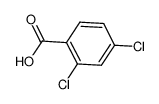




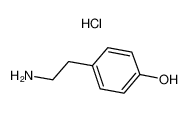


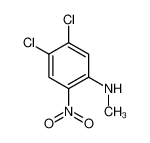











-
-

-
-
-

-
-
-
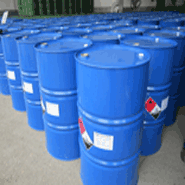
-
-
-

-
-
-

-
-
-

-
-
-

-
-
-
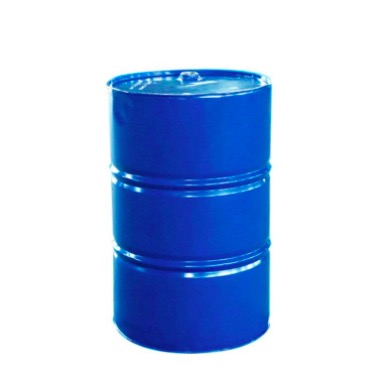
-
-
-

-
-
-
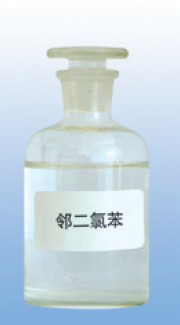
-
More Suppliers>>Wenzhou Win-Win Chemical Co., Ltd.
CHINA
Purity: 98%
Lead Time: 3 Day(s)
Price: -
Hangzhou J&H Chemical Co., Ltd.
CHINA
Purity: 98%
Lead Time: 7 Day(s)
Price: -
Xiamen Zhixin Chemical Co., Ltd.
CHINA
Purity: 99%
Lead Time: 3 Day(s)
Price: -
Henan Coreychem Co.,Ltd
CHINA
Purity: 98%
Lead Time: 3 Day(s)
Price: Min $1 /g
Hangzhou DayangChem Co., Ltd
CHINA
Purity: 98%
Lead Time: 7 Day(s)
Price: -
Skyrun Industrial Co., Limited
CHINA
Purity: 99%
Lead Time: 7 Day(s)
Price: -
Hangzhou Bingochem Co., Ltd.
CHINA
Purity: 98%
Lead Time: 7 Day(s)
Price: -
CHINA
Purity: 99%
Lead Time: 3 Day(s)
Price: Min $1 /kg
CHINA
Purity: 99%min%
Lead Time: 3 Day(s)
Price: -
Jiangsu Longchang Chemical Co., Ltd
CHINA
Purity: 99%
Lead Time: 7 Day(s)
Price: Min $1333.33 /吨